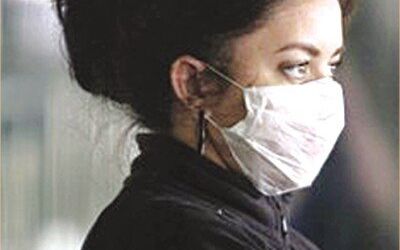Here are some questions and answers about flu symptoms and what to do about swine flu.
What is influenza and what are the symptoms of H1N1 swine flu?
Influenza is a virus that infects the nose, throat and lungs. Seasonal flu typically kills 250,000 to 500,000 people globally, mostly the elderly but also very young children, pregnant women and people with chronic diseases.
H1N1 swine flu is a new strain of influenza. Like seasonal flu, H1N1 is usually mild and requires no medical care. But H1N1 also differs from seasonal flu because it is more likely to infect children and young people than the elderly.
Most H1N1 symptoms are the same as seasonal flu: fever, coughing or sore throat, runny or stuffy nose, headaches, body aches, chills and fatigue. But swine flu also can cause vomiting and diarrhoea.
Dozens of other viruses cause similar symptoms but one hallmark of influenza is a sudden onset of symptoms. An illness that develops gradually is likely to be from another virus.
What if someone gets sick?
People who get infected by the H1N1 virus may be contagious as early as one day before they show symptoms.
Because H1N1 is now the overwhelming flu strain circulating globally, health authorities say anyone with influenza should assume it is the swine flu.
Quick flu tests may not detect H1N1 so doctors are advised not to even bother testing people with flu-like symptoms.
The U.S. Centers for Disease Control and Prevention recommends that people with H1N1 stay home from work, school, travel, shopping, social events and public gatherings until at least 24 hours after the fever has disappeared.
Officials also urge the sick to avoid contact with anyone in a high risk group, including pregnant women, children and infants and people with chronic medical conditions including asthma, diabetes or heart disease.
In the meantime, officials recommend frequent hand-washing, covering coughs and sneezes, and in some cases use of face masks to avoid spreading infection.
The main remedies for mild illness are rest and ample fluids such as water, broth, sports drinks or electrolyte beverages made to prevent dehydration in small children.
What if someone gets really sick?
Medical attention is recommended if the sick person has difficulty breathing or chest pain, appears blue or purple around the lips, vomits and cannot keep liquids down or shows signs of dehydration including dizziness.
People with chronic conditions who come into contact with an H1N1 patient should seek treatment with antiviral drugs such as oseltamivir or zanamivir.
Pregnant women are urged to take special care, as they are always at heightened risk from flu and especially H1N1.
Parents should especially seek treatment for children with flu-like symptoms who cannot be awakened easily, who appear blue or gray, or who become ill again after getting better — as this last symptom may indicate they have a secondary bacterial infection that can be more serious after a bout of flu.
Source: The Daily Star, October 10, 2009






Leave a Reply